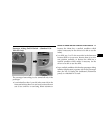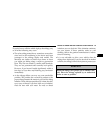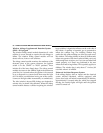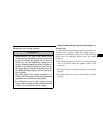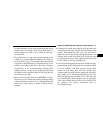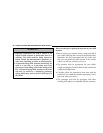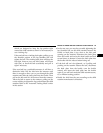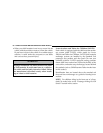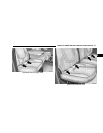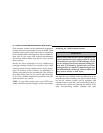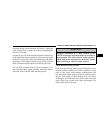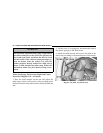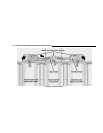
which are designed to keep the lap portion tight
around the child restraint so that it is not necessary to
use a locking clip.
If the seat belt has a cinching latch plate, pulling up on
the shoulder portion of the lap/shoulder belt will
tighten the belt. The cinching latch plate will keep the
belt tight, however, any seat belt system will loosen
with time, so check the belt occasionally and pull it
tight if necessary.
If the seat belt has a switchable retractor, it will have a
distinctive label: Pull the belt from the retractor until
there is enough to allow you to pass through the child
restraint and slide the latch plate into the buckle. Then
pull on the belt until it is all removed from the retractor.
Allow the belt to return to the retractor, pulling on the
excess webbing to tighten the lap portion about the child
restraint. Refer to the ЉAutomatic Locking ModeЉ earlier
in this section.
•
In the rear seat, you may have trouble tightening the
lap/shoulder belt on the child restraint because the
buckle or latch plate is too close to the belt path
opening on the restraint. Disconnect the latch plate
from the buckle and twist the short buckle-end belt
several times to shorten it. Insert the latch plate into
the buckle with the release button facing out.
•
If the belt still can’t be tightened, or if pulling and
pushing on the restraint loosens the belt, disconnect
the latch plate from the buckle, turn the buckle
around, and insert the latch plate into the buckle
again. If you still can’t make the child restraint secure,
try a different seating position.
•
Buckle the child into the seat according to the child
restraint manufacturer’s directions.
THINGS TO KNOW BEFORE STARTING YOUR VEHICLE 59
2



